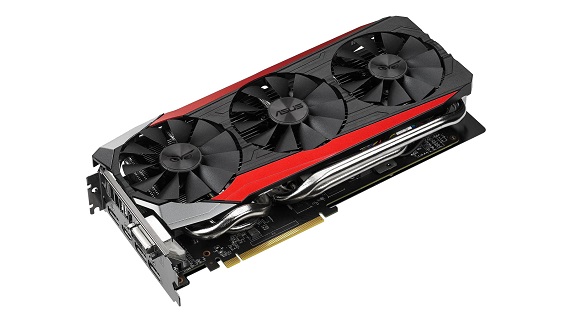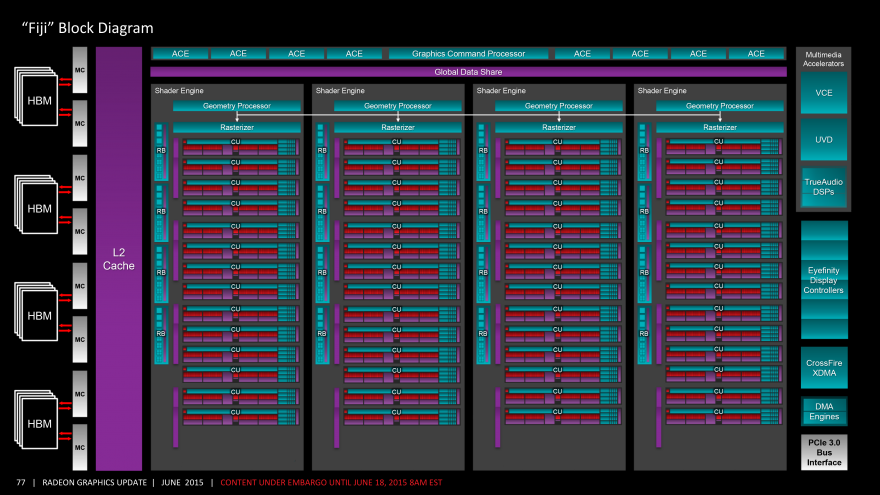Radeon R9 Fury

The Fiji GPU in the Radeon R9 Fury lost 8 out of 64 Compute Units. The remaining 56 blocks contain a total of 3584 shader ALUs (stream processors, in AMD terminology) and 224 texture units (compared to 4096 and 256 that a full-fledged Fiji has). In addition, AMD lowered the maximum GPU frequency from 1050 to 1000 MHz. The number of ROPs, the frequency (1000 MHz with a 4096-bit bus) and the amount of RAM (4 GB) remained unchanged.
Thus, the Radeon R9 Fury was 17% slower than the Fury X in tasks that load mainly shader ALUs or texture units.
Despite the difference in frequencies and the configuration of active GPU blocks, the TDP of Fury and Fury X is the same - 275 watts. Fury X gets higher quality ASICs with less current leakage. Another important factor is the cooling system. The standard CBO on Fury X, in addition to being quiet, is also needed because current leakage is higher, the higher the temperature of the crystal under load. The regular Fury does not have this privilege.
Specifications Radeon Radeon R9 Fury
|
|
||||||
|
Chip
|
||||||
|
Frequencies
|
||||||
|
Memory
|
||||||
|
Interface and TDP
|
The Radeon R9 Fury X only exists as a reference board. The R9 Fury has been manufactured by partner companies from the very beginning using original cooling systems on a reference or on our own printed circuit board.




